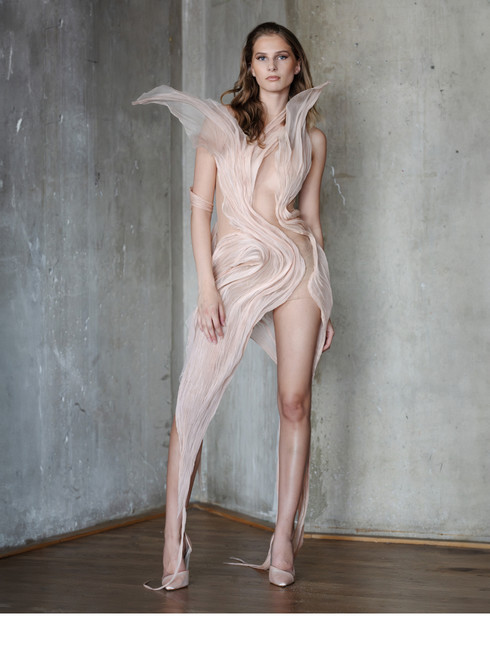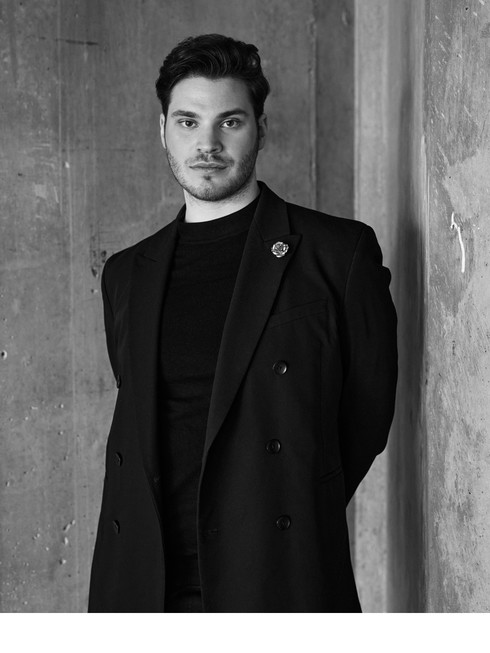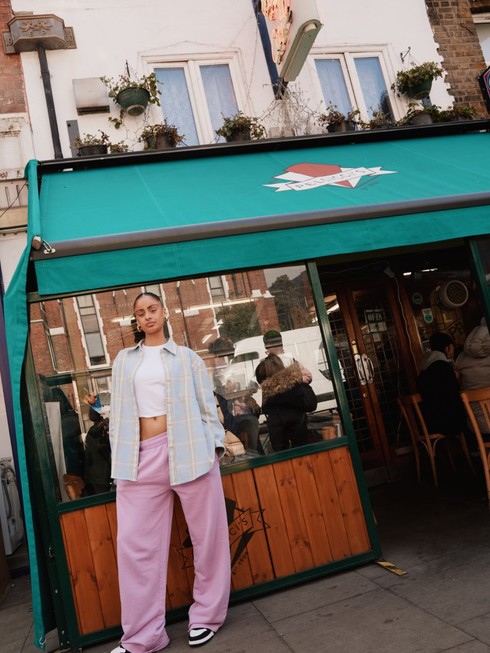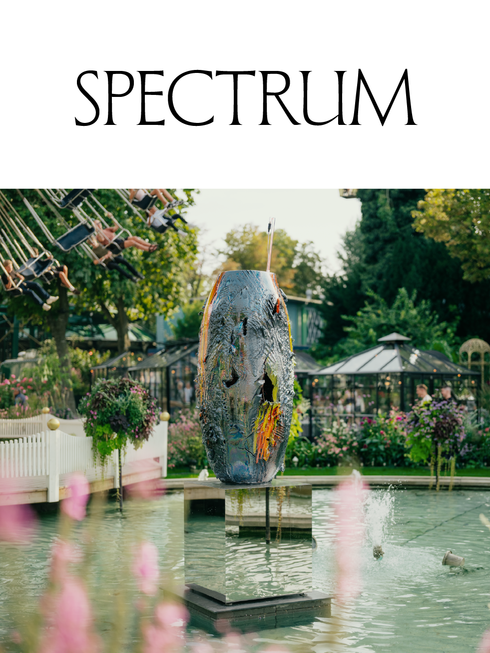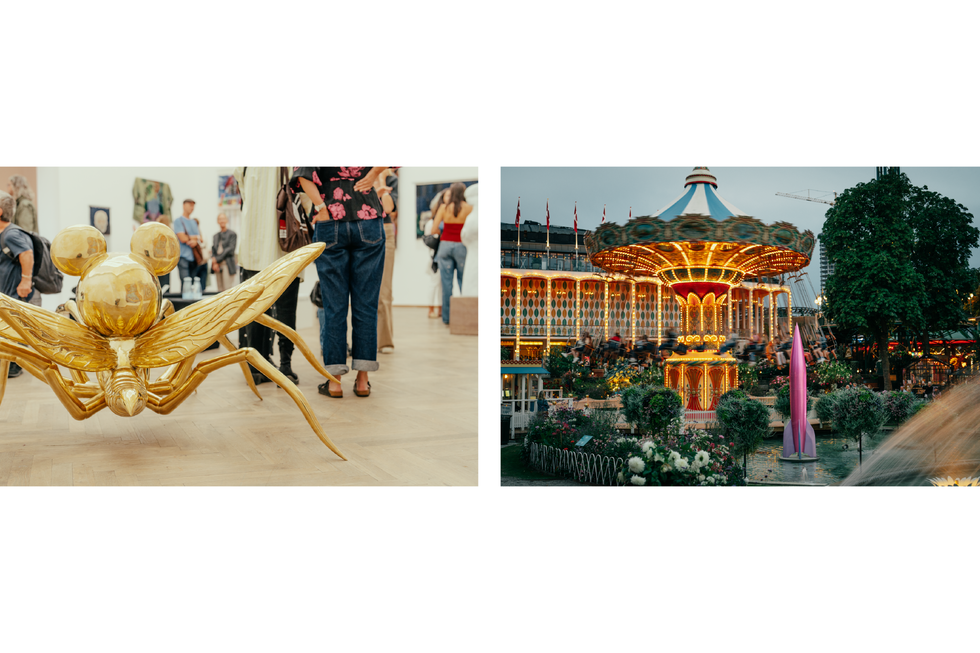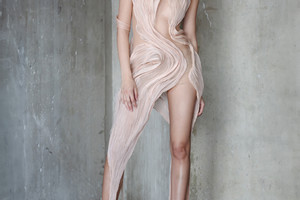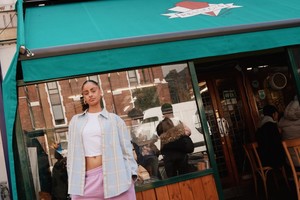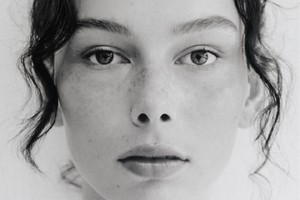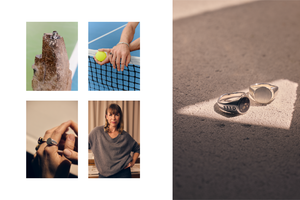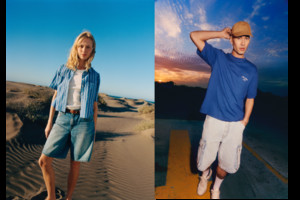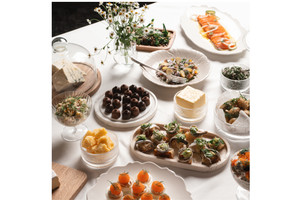An interview with Rasmus Georgiadis - winner of the NK Young Talent Award by Beckmans
Written by Ulrika LindqvistWith botanical elegance, sculptural precision, and an unwavering vision of beauty, the winner of this year’s NK Young Talent Award is turning heads and turning fashion into art. Fresh from receiving the prestigious honor, Rasmus Georgiadis speaks with us about the journey from childhood sketchbooks to intricate, nature-inspired couture, the challenges behind the celebrated collection A Flourishing Confluence, and a creative process rooted in emotion, detail, and transformation.
Ulrika Lindqvist: Congratulations on winning the NK Young Talent award. What are your initial feelings?
Rasmus Georgiadis: Thank you so much. I’m incredibly grateful, and it feels truly rewarding to have my work
acknowledged in this way. This kind of recognition makes all the hard work feel worthwhile.
UL: Tell us a bit about your backstory. What did you study or work with before getting accepted to Beckmans?
RG: Fashion has been a focus of mine for quite a while — both creatively and through academic research. In high school, I studied a fashion program with an emphasis on sustainability, which taught me a lot about materials, production processes, and their environmental impacts. From early on, I became aware of not just how I design, but why I choose certain materials over others.
I began experimenting with draping during this time, since we mostly worked from pre-made base patterns. But I wanted to build garments from scratch, so after graduating, I took a year to study patternmaking in Malmö. Alongside drafting skills, I also learned Photoshop and Illustrator — tools that have since become essential in my work at Beckmans and beyond. In 2020 I moved to Stockholm and began studying Fashionology — and honestly, had I not gotten into Beckmans the following year, I likely would have pursued a full degree in that field.
UL: What initially drew you to the fashion industry?
RG: I think it started with art. As a child, I was always drawing — filling sketchbooks with characters, especially princesses and fairies. What fascinated me most was designing their dresses. That creative impulse never really faded. Over time, those fantasy figures turned into models, and the designs became more diverse and expressive. If you’d asked me what I wanted to be as a kid, the answer was always “a fashion designer.” There have been moments of doubt, of course — where I wondered what I’d do if fashion wasn’t an option. But I’ve never found a real alternative, which tells me this is the only path forward.
UL: What is your inspiration behind your designs — and this collection in particular?
RG: Nature has always been a big source of inspiration for me — especially botanical textures and organic forms. In this collection, that connection is very present. But the core idea was to explore how a garment and the wearer could appear to grow together — to feel like one unified form, or like an extension of each other. To give structure to that concept, I turned to one of my favorite childhood art styles: Art Nouveau. Its romantic, flowing aesthetics — seen in everything from illustration to interior design — became a guiding reference. I used this collection as a showcase of my techniques and creative growth.
For example, I looked at how Art Nouveau book covers used symmetrical, botanical patterns, and translated that into laser-cut designs in gold silk, placed on mesh to give a two-dimensional “glued-on” effect. I also drew inspiration from ornamental metalwork, which I interpreted using 3D modeling and printing. It was a long process — from sketch to CAD model to physical piece — including patination to mimic aged metal. These components were meant to feel alive, as if the model was wearing, or becoming part of, an art installation. I try to create some kind of layered thinking for each piece — I enjoy working in small details
that tell a bigger story.
UL: Can you share some insights into your creative process?
RG: For me, creativity is driven by emotion. I want my work to evoke a feeling in others — and forthat to happen, I believe I have to feel it twice as strongly myself. That can come from setting a mood with certain music, or from hours of draping until I land on a detail that truly excites me. If I, as my own toughest critic, feel something powerful about what I’ve made, it’s usually a good sign.
I also rely heavily on drawing. I don’t use erasable tools when I sketch — I prefer the permanence of ink. It forces me to trust my hand, to commit to the line. The embroidery patterns in this collection were created by freehand sketching — letting intuition lead the way, thentranslating those lines directly into stitchwork.
UL: What are your core values as a designer?
RG: At the heart of my work is a commitment to creating my own version of beauty. I believe beauty is incredibly powerful — not necessarily in how others perceive it, but in how it can transform how someone sees themselves. To help someone feel strong, confident, and like the best version of themselves — that’s
something I find deeply meaningful. Fashion can be a powerful tool for empowerment, and that sense of emotional transformation is what I strive for in every piece I create.
UL: What was the biggest challenge in creating this collection?
RG: The biggest challenge in “A Flourishing Confluence” was managing the weight and structure of the heavier pieces. I wanted the garments to feel light and effortless — almost like gravity wasn’t an issue — but, of course, gravity had plenty to say. For instance, the Ginkgo leaf piece is covered in thousands of rhinestones and weighs several kilos. I had to find hidden structural solutions — like reinforced stitching and built-in wire — tomake it appear weightless. Similarly, the angelic white dress worn by Carola was made from a material too heavy to hold its own shape. I ended up integrating metal wiring to support andsculpt it, and it took multiple prototypes to reach the final result. At one point, I nearly scrappedthe design because it felt impossible to realize. But pushing through those challenges made it all the more rewarding in the end.
UL: What can we expect from you in the near future?
RG: I have a few projects in the works, and I’m also opening up for private commissions. My vision isto bring beauty not just to the runway or red carpet, but to individuals — creating pieces in close collaboration with the people who will wear them. My goal is to design garments that don’t just clothe the body, but uplift the spirit — pieces that help people feel beautiful, magical, and unstoppable.

